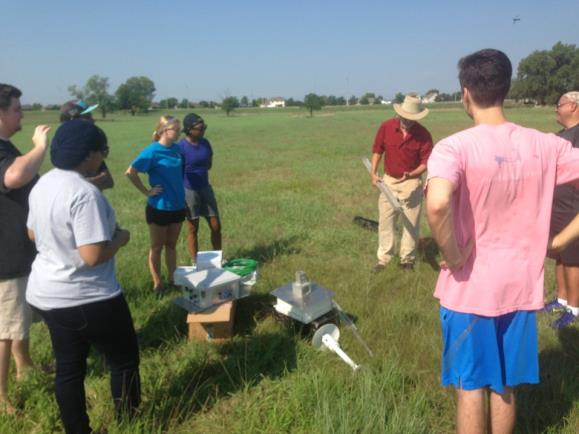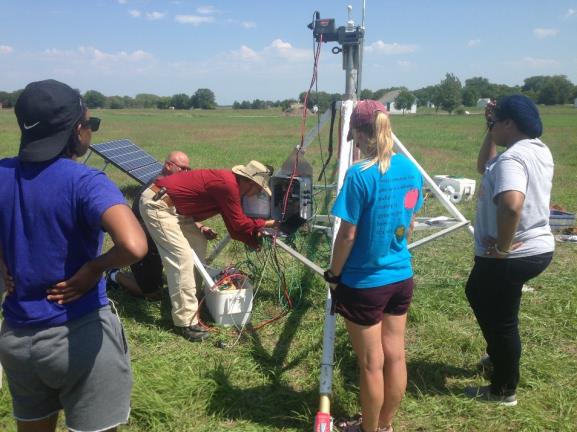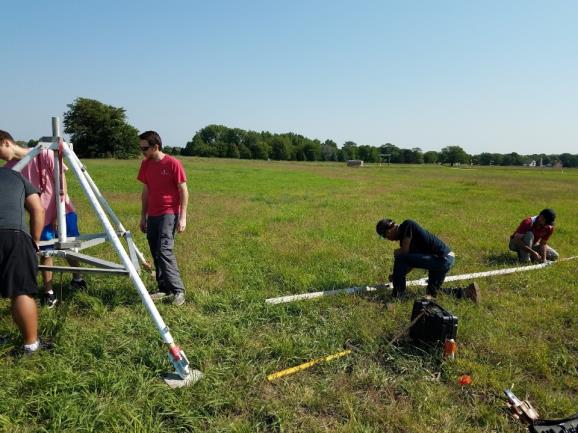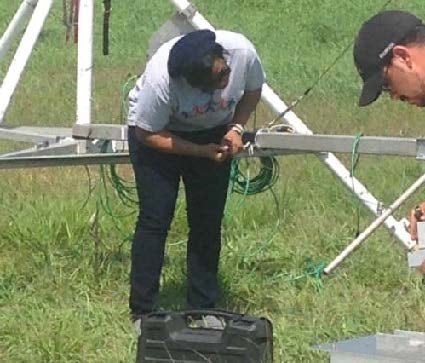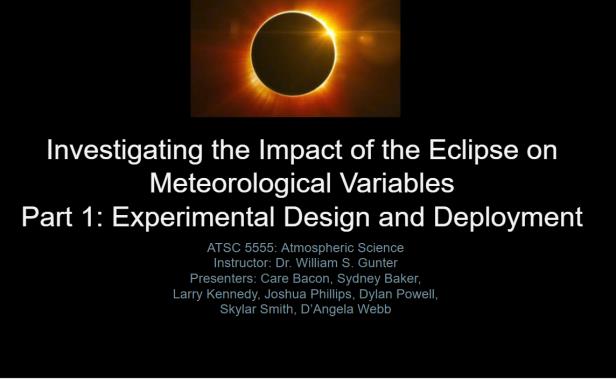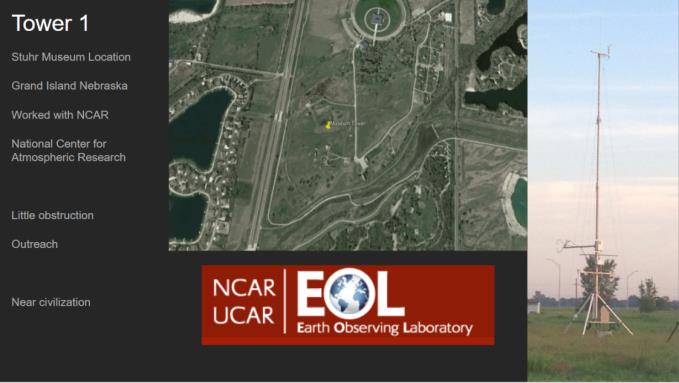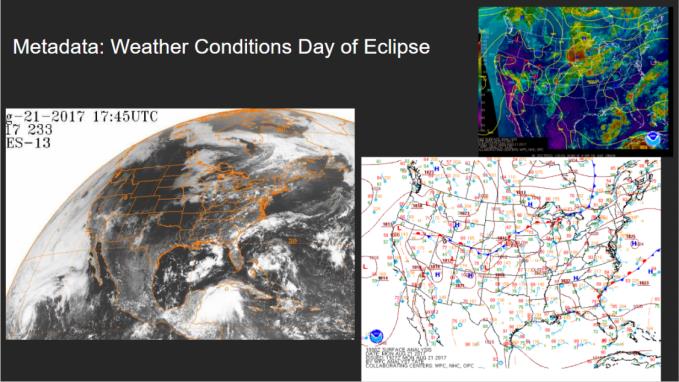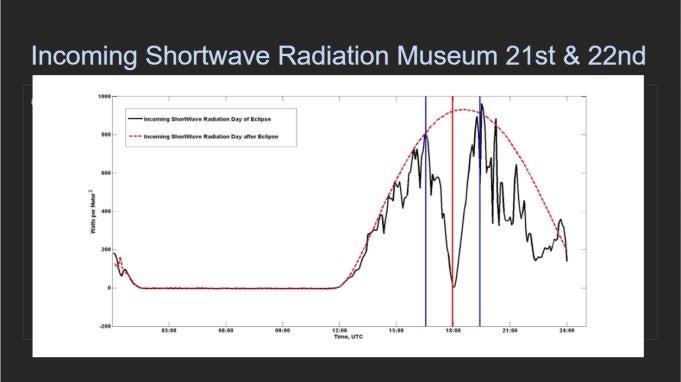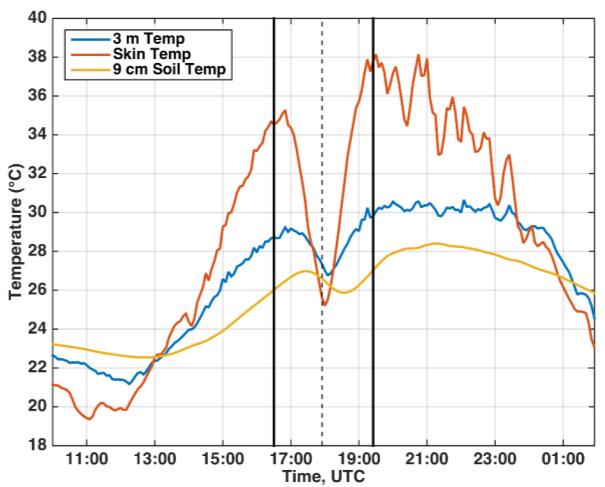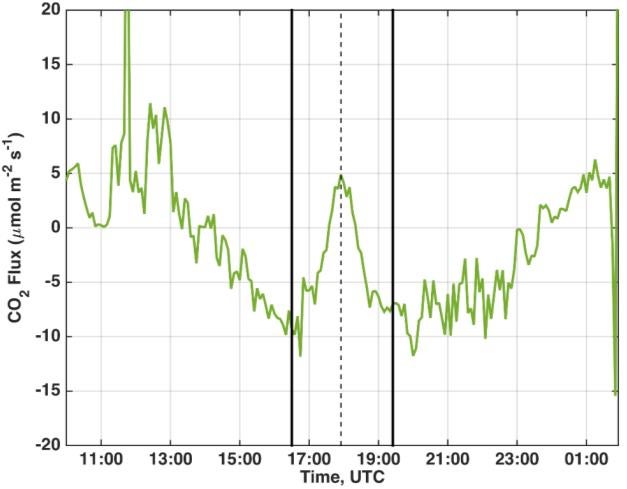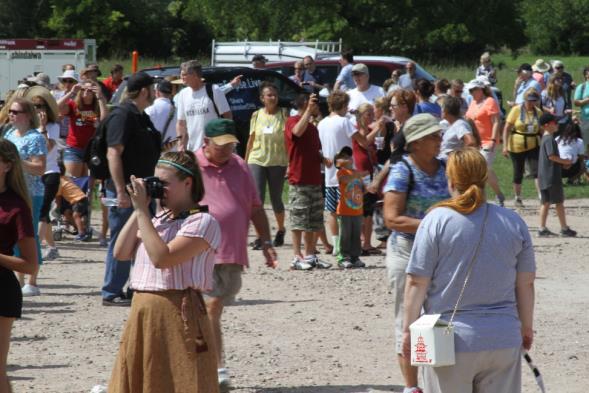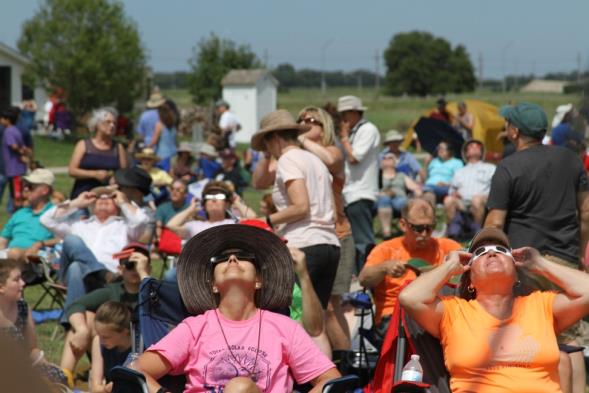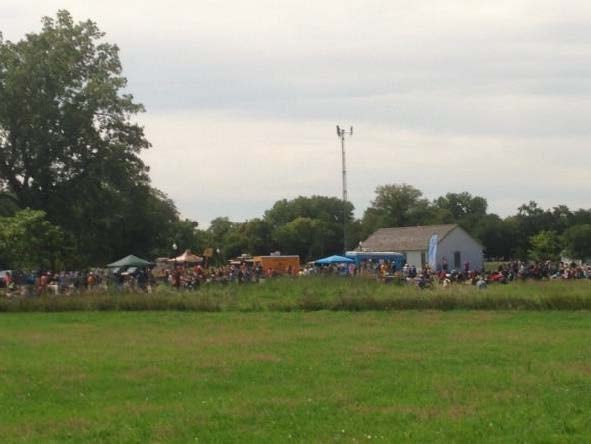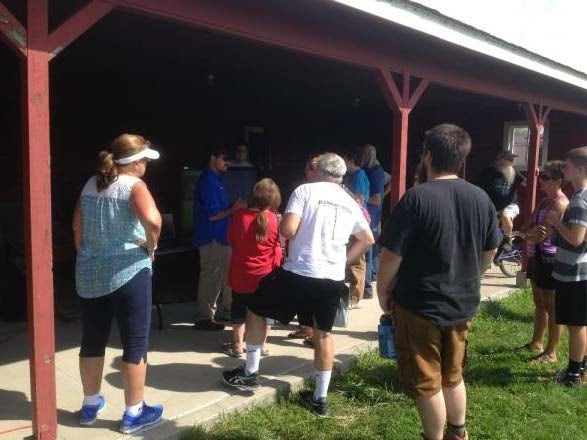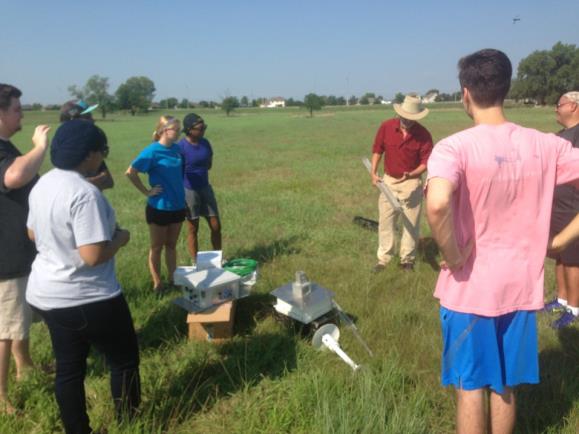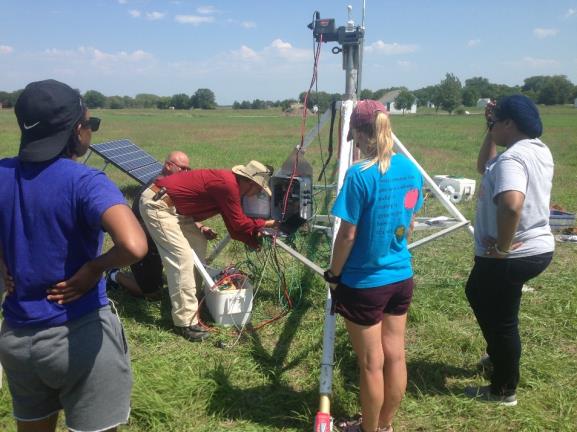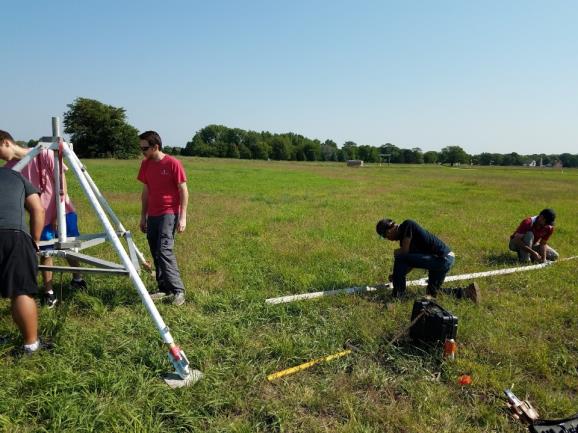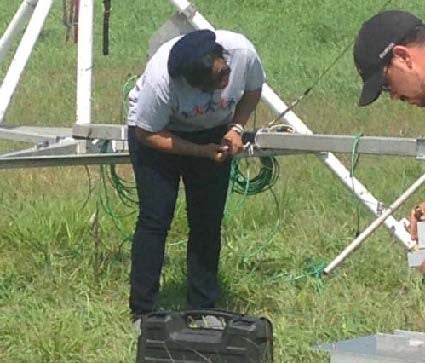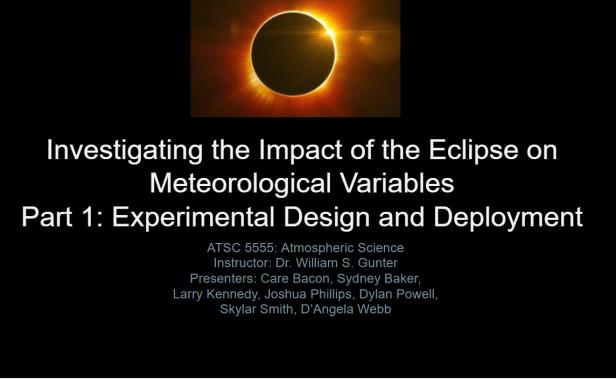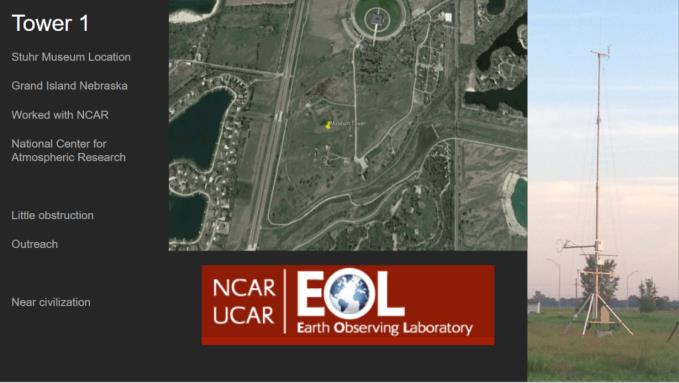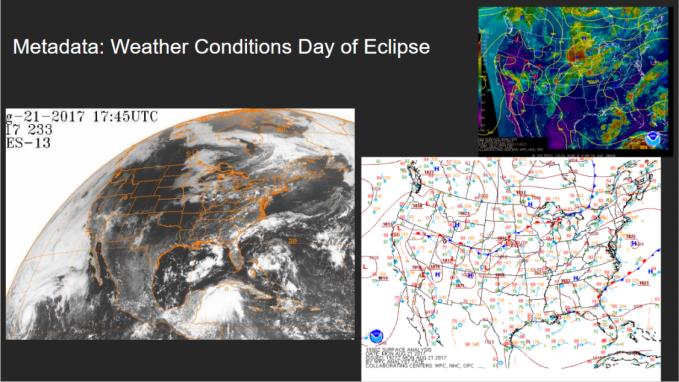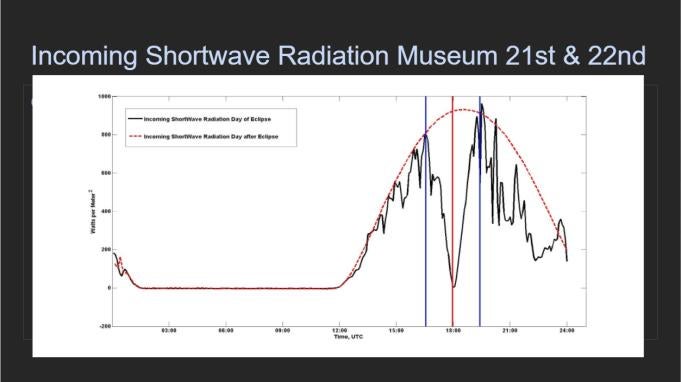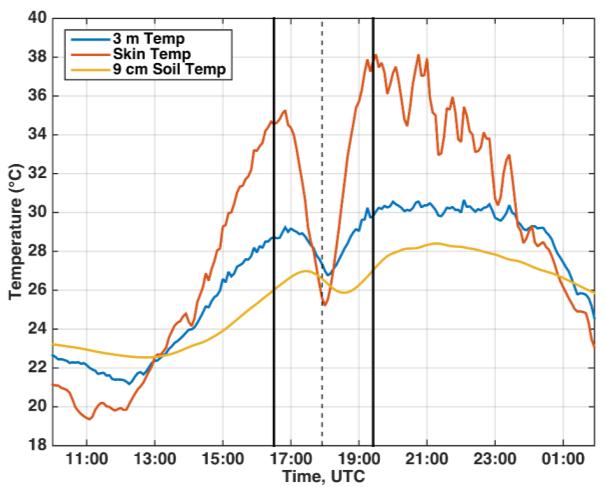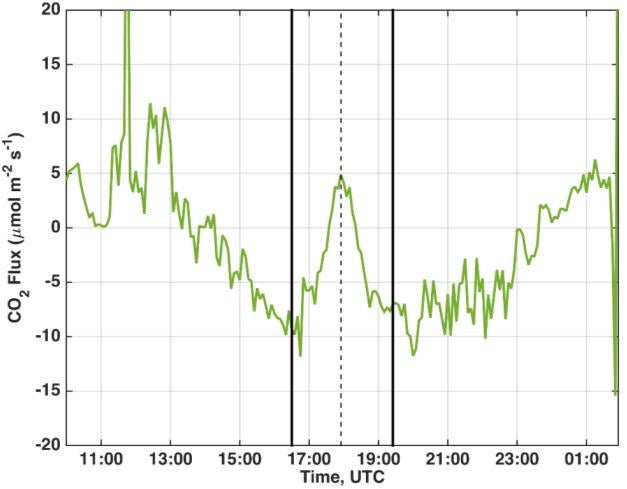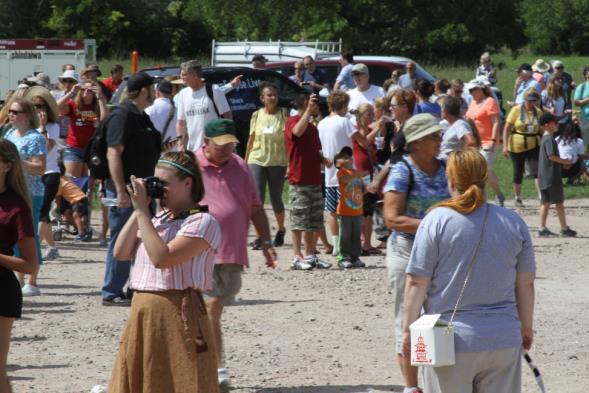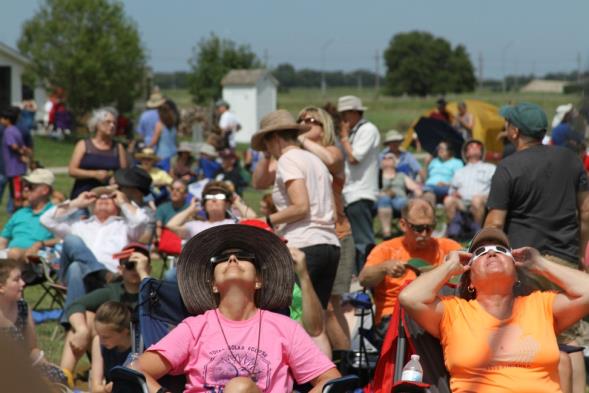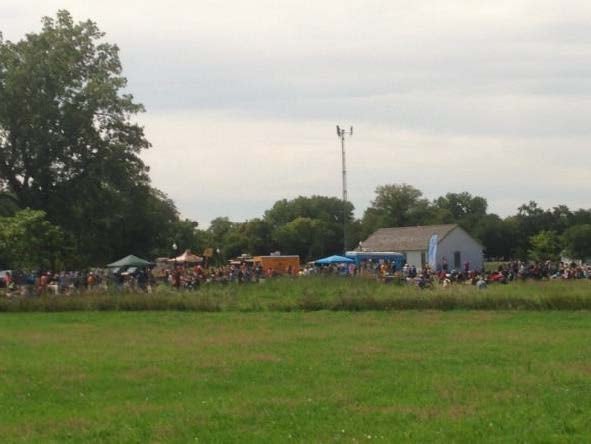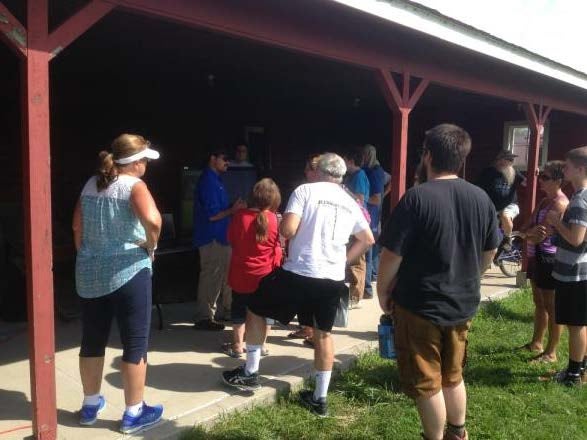While the eclipse itself lasted only a few hours, the ARTSE deployment spanned the entire Fall 2017 semester. This section details the multiple components of the project, including the field deployment, the educational activities, and the outreach opportunities.
Field Deployment
The ISFS stations were deployed to Central Nebraska several days prior to the eclipse. Nebraska was chosen as the deployment site to reduce the probability of cloud cover obscuring the eclipse as well as provide more opportunities to find sites with good exposure for flux measurements. One ISFS station was deployed at the Stuhr Museum of the Prairie Pioneer in Grand Island, Nebraska. The second stations was originally going to be deployed at the Central Nebraska Regional Airport, but the restrictions in place at the airport for this event necessitated finding an alternate location for the ISFS tower. Fortunately, an employee at the National Weather Service in Hastings, Nebraska offered some open pasture land approximately 50 km northwest of the site in Grand Island. The CSU contingent (composed of 7 students, the PI, and 3 employees of CCSSC) arrived in Grand Island on Saturday 19 August and were able to assist NCAR employees Matt Paulus and John Militzer with the deployment of the Stuhr Museum station (Figure 1). For many students, this was their first experience with complex meteorological instrumentation. Thus, the entire process was thoroughly (and patiently) explained and demonstrated by the NCAR employees while still allowing students to participate. Both stations were deployed and collecting data before 20 August 2017 and remained operational through August 22 2017. As the Stuhr Museum was hosting a community-wide eclipse-viewing event, the deployment also included a TV monitor to which data from both stations were streamed. On the day of the eclipse, CSU students, as well as members of the community, were able to watch the meteorological variables recorded by the flux stations change in real time.
Figure 1. ATSC 5555 students helping with the deployment of the ISFS tower at the museum.
Educational Activities
After the field deployment, the primary educational activity was the Selected Topics course, ATSC 5555. Using the ISFS stations as a model, the seven students enrolled in this course (mostly Earth and Space Science Majors) were taught about each instrument as well as exposure and sampling considerations. Another component of the course was an introduction to computer programing. Students were engaged in hands-on learning through examples and laboratory assignments in CSU’s engineering lab (Figure 2). Given the capabilities of the lab and the instructor’s experience, MatLab was the language that was taught to the students. The students progressed through several laboratory assignments and gained some experience in programming before the ARTSE ISFS data were received from NCAR on 26 October 2017. After receipt of the data, the students furiously worked on processing the data before presenting at the ESS departmental seminar on 9 and 16 November to over 30 of their peers and professors. Several slides from each presentation are included below (Figure 3). The presentation sparked several great discussions, particularly around the response of the near surface temperature (Figure 4a) as well as the response of CO2 (Figure 4b) to eclipse totality.
Figure 2. Example of an ATSC 5555 class assignment geared toward learning more about the ARTSE data. This assignment was given shortly after the data were received.
Figure 3. Slides from ATSC 5555 presentations on 9 November (a & b) and 16 November (c & d).
Figure 4. Evolution of various measures of temperature (a) and carbon dioxide flux (b) on the day of the eclipse.
Outreach and Research Activities
Given the national scale of the eclipse, outreach opportunities were a significant component of the ARTSE project. These opportunities included several media interviews of the PI and students prior to and during the event. Additionally, the PI was invited to discuss the project at the 2017 Eclipse Community Showcase in Boulder, Colorado, on 21 July 2017. Attendance to this event allowed the PI to connect with other scientist also studying the eclipse. Perhaps the best example of project-related outreach was the eclipse-event hosted by the Stuhr Museum on 21 August 2017 called, “The Gem over the Prairie Eclipse Event”. Museum officials reported that over 8,000 people attended this event (Figure 5). The ISFS station, as well as CSU and NCAR personnel, were near the main stage and not far from the eclipse-viewing field. This location promoted many visitors to walk by our station where they could see the tower in the distance, examine a TV monitor with data plots, and learn about the science from CSU and NCAR personnel. In addition to the information station for the flux tower, the PI of the project was of offered an opportunity to speak in the museum-designed program during the event. In this program, the project PI and John Militzer from NCAR discussed the meteorological science and instrumentation of the project to a crowd of several hundred a few hours prior to totality.
While ARTSE was designed to primarily support educational and outreach opportunities at CSU and in Nebraska, the quality and uniqueness of the data have also supported some low-level research. Stemming from the analysis of the ATSC 5555 students, the PI developed and presented a poster describing the initial results of ARTSE at the 2018 American Meteorological Society Annual Meeting in Austin, Texas, on 8 January 2018.
Figure 5. Images from the Gem over the Prairie Eclipse event. Images a & b courtesy of the Stuhr Museum of the Prairie Pioneer. Museum visitors lined up in front of food trucks across from the deployment site (c). Museum visitors learning about ARTSE on the day of the eclipse (d).
